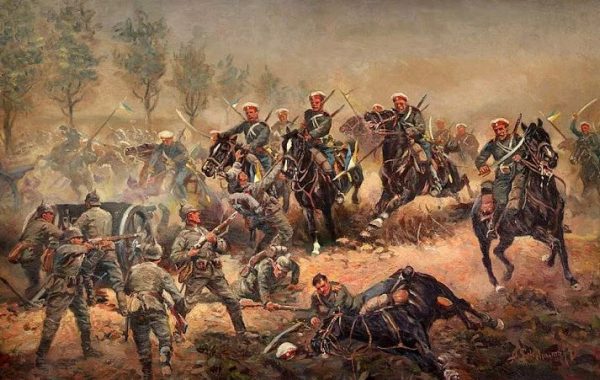
In the first hours of August 30, confronting the reality of his army’s collapse, Samsonov went into the forest, away from his staff, and shot himself. After three days of battering by German artillery, Samsonov’s troops began their retreat more German forces cut off their path and a massive slaughter ensued. The delay in starting the attack had given Samsonov’s forces more time to advance deeper into the sack formed by the German divisions enveloping them from both sides, the strength of which Samsonov consistently underestimated. On August 26, after intercepting wireless messages from both Samsonov and Rennenkampf, the Germans were able to take Samsonov’s army by surprise with the force of their attack near the village of Tannenberg, to the southwest of the Masurian Lakes. Though Ludendorff succumbed to nerves initially, delaying the start of the German attack by one day, Hindenburg was able to calm his subordinate-not for the last time in what would become a fabled partnership. Separated by the great Masurian Lakes, the two Russian armies were unable to effectively communicate with each other as to their movements, a circumstance that would prove deadly. Hindenburg, a retired general of great stature, and Ludendorff, who had just led the German capture of the Belgian fortress of Liege, arrived in East Prussia and immediately authorized an aggressive counter-action against the Russians, previously planned by a senior staff officer in the region, Colonel Max Hoffmann. Meanwhile, change was afoot behind the German lines: Helmuth von Moltke, chief of the German general staff, chose to replace the previous leader, Maximilian von Prittwitz, after the latter issued a misguided order for a German retreat to the River Vistula, against the advice of his corps commanders. After a Russian victory in the Battle of Gumbinnen on August 20, however, Rennenkampf paused to regroup his forces. The Russian 1st Army, under General Pavel Rennenkampf, advanced to the northeastern corner of East Prussia, while Samsonov’s 2nd Army made headway into the southwest, planning to join with Rennenkampf’s men and pin the outnumbered German 8th Army between them. In the middle of August 1914, much sooner than had been anticipated, Russia sent two armies into East Prussia, while Germany, according to its war strategy, had the bulk of its forces concentrated to the west, against France.


On August 26, 1914, the German 8th Army, under the leadership of Paul von Hindenburg and Erich Ludendorff, strikes with lethal force against the advancing Russian 2nd Army, led by General Aleksandr Samsonov, in East Prussia during the opening weeks of the First World War.


 0 kommentar(er)
0 kommentar(er)
